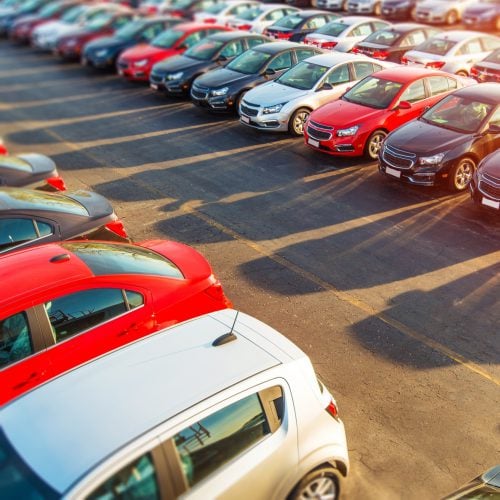Cars and Drivers
Are Fuel-Efficiency Standards Really Driving Vehicle Prices Higher?

Published:
Last Updated:

In late July, the National Highway Traffic Safety Administration (NHTSA) filed a notice of the agency’s intention to review and potentially revise the so-called Corporate Average Fuel Economy (CAFE) standard scheduled to take effect for model year 2021 cars and light trucks.
The Obama administration and automakers who sell vehicles in the United States agreed in 2012 to a fleet average fuel efficiency rating in the range of 40.3 to 41.0 mpg by model year 2021, rising to 54.5 mpg by 2025.
In the final few days of the Obama administration, the U.S. Environmental Protection Agency (EPA) issued a final determination on January 13 that maintained the 2012 targets. Automakers objected and President Trump ordered a review of the fuel-efficiency standards for model years 2022 to 2025.
The American Council for an Energy-Efficient Economy (ACEEE) on Thursday released a comment to be considered during the EPA’s review reporting that the link between improved fuel economy and the price of new cars and trucks is tenuous at best.
A competing study published in March by the Alliance of Automobile Manufacturers (AAM) noted the economic impact:
Our findings don’t call into question the need for regulation but we found that the federal requirements need to be fine-tuned. Due to unexpectedly low gas prices and tepid demand for electric and hybrid vehicles, the standards will have greater economic impact than envisioned when they were developed.
The AAM has consistently claimed that an average new car today costs 60% more than an early 1990s model and that is due partly to emissions and mileage standards and regulations. A study at the Heritage Foundation sets the increase due to fuel-economy regulation at a minimum of $3,800 per vehicle.
Using data from the U.S. Bureau of Economic Analysis, ACEEE claims that the average vehicle price would have been $1,900 lower in the first part of this year if the mix of passenger cars and light trucks had been the same as it was in 2009, the year new vehicle sales tanked due to the recession. The ACEEE said:
For cars alone, prices have been on a downward trajectory since 1998, well before the recession or the increase in fuel economy requirements. The claim by the Alliance of Automobile Manufacturers that car prices have increased by 60% since the 1990s just doesn’t hold up — unless you ignore inflation and prevalent consumer incentives offered by automakers.
What has driven up prices is the change in the mix of vehicles toward light trucks, SUVs and crossovers. These vehicles cost an average of 7% more, and there are some fabulously high-priced vehicles in the pickup truck class these days.
The ACEEE also cites a Consumer’s Union study that found the price of entry-level vehicles “is largely unchanged over the past 10 years. Despite increasing fuel economy requirements, affordable vehicle options remain.”
The ACEEE press release contains links to many other documents.
Are you ready for retirement? Planning for retirement can be overwhelming, that’s why it could be a good idea to speak to a fiduciary financial advisor about your goals today.
Start by taking this retirement quiz right here from SmartAsset that will match you with up to 3 financial advisors that serve your area and beyond in 5 minutes. Smart Asset is now matching over 50,000 people a month.
Click here now to get started.
Thank you for reading! Have some feedback for us?
Contact the 24/7 Wall St. editorial team.